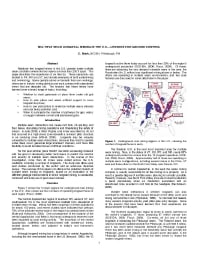Mining Publication: Multiple Seam Longwall Mining in the U.S. - Lessons for Ground Control
Original creation date: February 2007
Authors: C Mark
NIOSHTIC2 Number: 20031648
2007 SME Annual Meeting and Exhibit, February 25-28, Denver, CO, preprint 07-104. Littleton, CO: Society for Mining, Metallurgy, and Exploration, Inc., 2007 Feb; :1-7
Relatively few longwall mines in the U.S. operate under multiple seam conditions where the two seams are less than 200 ft apart. This paper describes the experience of six that do. These operations are located in PA, WV and UT, and include examples of both undermining and overmining. Some operate above or beneath their own workings, others are in historic mining districts and must contend with abandoned mines that are decades old. The lessons that these mines have learned cover a broad range of topics, including: Whether to stack gateroads or place them under old gob areas; How to size pillars and select artificial support to cross longwall stop lines; How to use yield pillars to minimize multiple seam stresses and coal bump potential, and; When to anticipate the creation of pathways for gas, water, or oxygen between current and abandoned gobs.

NIOSHTIC2 Number: 20031648
2007 SME Annual Meeting and Exhibit, February 25-28, Denver, CO, preprint 07-104. Littleton, CO: Society for Mining, Metallurgy, and Exploration, Inc., 2007 Feb; :1-7
- AMSS - Analysis of Multiple Seam Stability - 2.1.02
- Analysis of Multiple Seam Stability
- Coal Mine Safety Applications of Seismic Monitoring
- Degasification System Selection for U.S. Longwall Mines Using an Expert Classification System
- Failure Mechanics of Multiple Seam Mining Interactions
- Horizontal Stress and Longwall Headgate Ground Control
- International Experience with Longwall Mining into Pre-Driven Rooms
- Modeling and Prediction of Ventilation Methane Emissions of U.S. Longwall Mines Using Supervised Artificial Neural Networks
- Multiple-Seam Mining in the United States: Design Based on Case Histories
- Seismic Monitoring Strategies for Deep Longwall Coal Mines